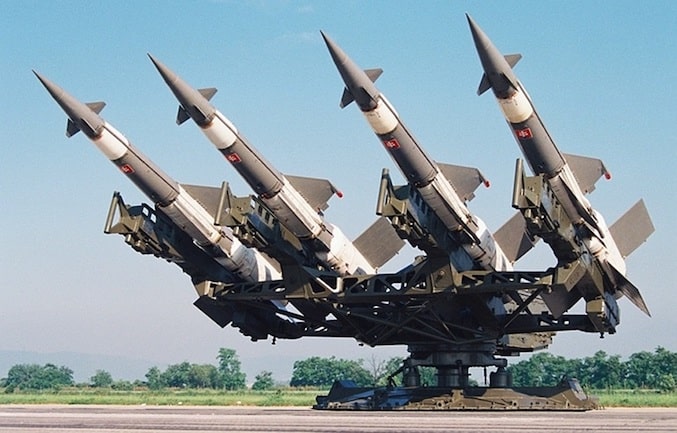India is leaving nothing to chance when it comes to defending its skies. With a powerful combination of big spending and indigenous innovation, the country is ramping up its air defence like never before.
The Defence Research and Development Organisation (DRDO) has rolled out the ambitious Project Kusha Sky Shield programme, a homegrown answer to the world’s most advanced missile defence systems. At the same time, the Indian Army is set for a massive Rs 30,000 crore boost with the induction of Quick Reaction Surface-to-Air Missile (QRSAM) systems—another indigenous success story.
Together, these moves signal a full-spectrum, all-out push to make India’s air defence network stronger, smarter, and future-ready, blending cutting-edge technology with decisive investment to ensure the nation’s security on every front.
Project Kusha: Bridging the Gap in Air Defence
Project Kusha, also known as the Extended Range Air Defence System (ERADS), stands as one of DRDO’s most ambitious undertakings. Designed to rival the likes of Russia’s S-500 and America’s THAAD, Project Kusha aims to provide India with a robust, indigenous, long-range air defence shield capable of countering a wide range of aerial threats. This includes everything from stealth jets and drones to aircraft and even Mach 7 anti-ship ballistic missiles. With an interception success rate of 80–90 per cent, Project Kusha is being seen as a potential game-changer for India’s strategic defences.
The system is specifically intended to bridge the range gap between existing platforms like the 80 km MR-SAM and the 400 km S-400, while integrating seamlessly with other indigenous systems such as Akash and Barak-8. Project Kusha will feature a multi-layered defence architecture, offering both strategic and tactical cover for critical infrastructure, military bases, and urban centres. Its three planned interceptor variants—M1, M2, and M3—are designed to provide coverage at ranges of 150 km, 250 km, and 350 km, respectively.
Technological innovation is at the heart of Project Kusha. The system is expected to harness artificial intelligence for decision support, process real-time data from multiple sensors, and deploy dual-seeker technologies that combine radar and infrared guidance. The compact design of the interceptors, especially the 250 mm diameter kill vehicles, showcases DRDO’s focus on efficiency and modernity, ensuring the system remains agile and effective against evolving threats.
QRSAM: Quick Reaction, Stronger Defence
Running parallel to Project Kusha, the Indian Army is preparing for a significant upgrade with the anticipated approval of a Rs 30,000 crore proposal to procure three regiments of indigenous QRSAM systems. Developed by DRDO, the QRSAM is a highly mobile missile system capable of detecting, tracking, and neutralising enemy aircraft, drones, and helicopters within a range of 25–30 km.
QRSAM systems have undergone extensive testing under a variety of operational scenarios, including both day and night conditions, and are designed to operate even while on the move. This makes them ideal for protecting mobile army formations such as tank and infantry columns in dynamic battlefield environments. The QRSAM will complement existing systems like Akash and MRSAM, filling a crucial gap in India’s short to medium-range air defence.
The decision to acquire QRSAM comes in the wake of Operation Sindoor, where India’s air defence network successfully intercepted multiple waves of drones and missiles launched by Pakistan. The addition of QRSAMs will further enhance the Army’s ability to respond swiftly to evolving aerial threats along both the western and northern borders, ensuring that India’s forces remain protected in the face of new and emerging challenges.
Strategic Significance and the Road Ahead
Both Project Kusha and the QRSAM acquisition are shining examples of India’s ongoing push for self-reliance under the Atmanirbhar Bharat initiative. Project Kusha, with a projected cost of Rs 21,700 crore for five squadrons, is notably more cost-effective than comparable foreign systems and is tailored to India’s specific operational needs. The QRSAM, at a cost of Rs 30,000 crore for three regiments, underscores the government’s commitment to strengthening indigenous capabilities and reducing reliance on imports.
The integration of these systems will create a comprehensive, multi-layered air defence shield, capable of countering threats ranging from low-flying drones to high-altitude ballistic missiles. Project Kusha is expected to be operationally deployed by 2028–2029, while the QRSAM induction will provide an immediate boost to the Army’s tactical air defence.
India’s recent experiences, particularly during Operation Sindoor, have highlighted the importance of indigenous, battle-tested systems. With both Project Kusha and QRSAM, India is not only enhancing its own security but also positioning itself as a potential exporter of advanced defence technology in the future.


